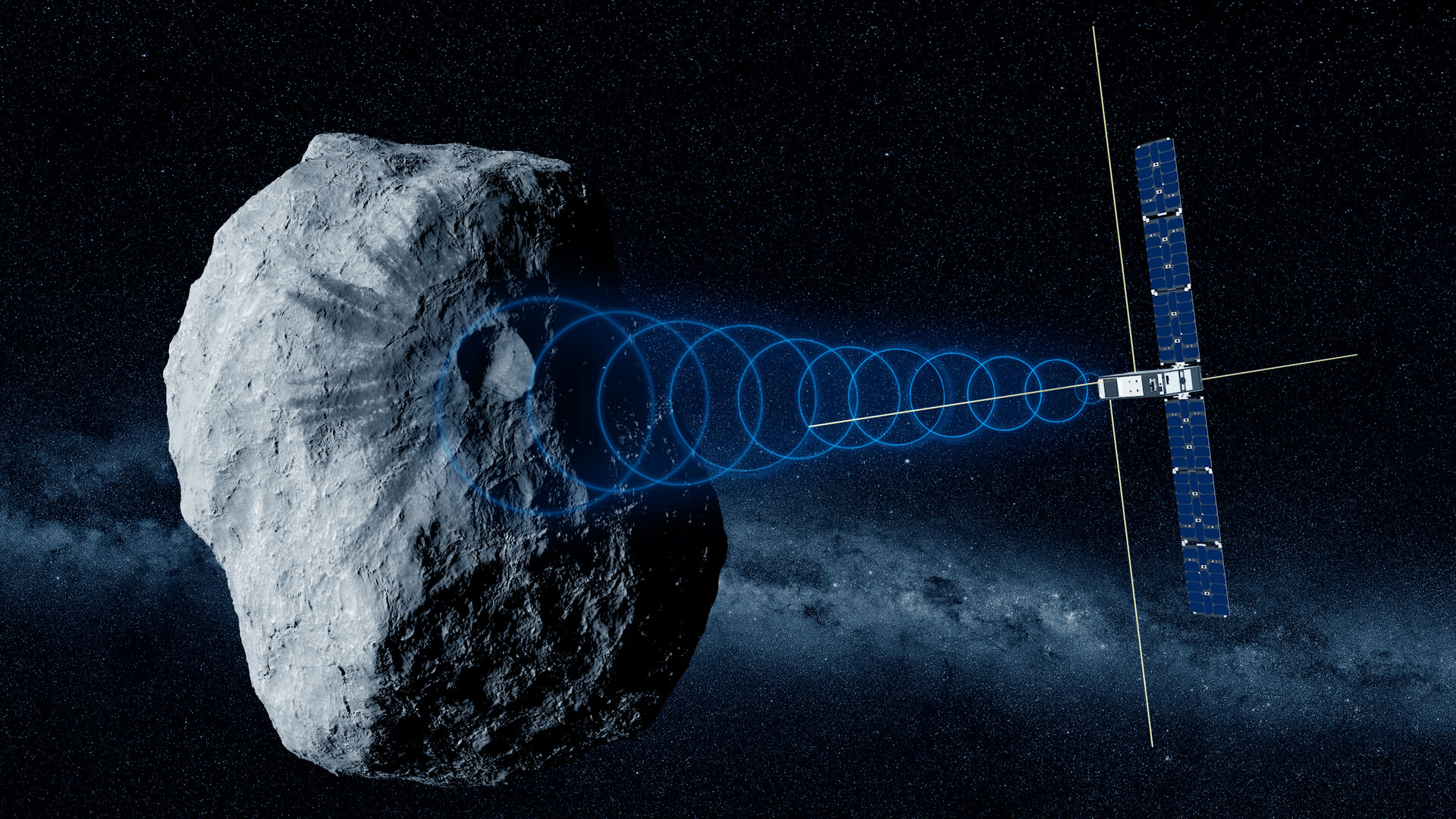Asteroid struck by NASA's DART probe to be radar-scanned with Hera mission
The European Space Agency (ESA) is going to gaze inside an asteroid with radar for the first time.

The European Space Agency (ESA) is going to gaze inside of an asteroid with radar for the first time.
The radar component of a small satellite, called a CubeSat, has been delivered to ESA for integration with a spacecraft being sent to study the asteroid Dimorphos. Dubbed Juventas, this CubeSat will be part of the agency's Hera mission, which aims to investigate the aftermath of Dimorphos' collision with NASA's DART (Double Asteroid Redirection Test) spacecraft that took place in September of last year.
DART's goal was to impact Dimorphos in such a way that it altered the space rock's orbit around a larger asteroid, Didymos. Though Dimorphos and Didymos didn't pose a threat to us, they were excellent subjects to see whether striking an asteroid can change its trajectory. If so, scientists would know they can employ the tactic to shield our planet in case it's necessary. And in short, the mission was a resounding success. It officially checked off a box on NASA's ambitious plan of building a planetary defense mechanism to protect Earth from potentially harmful asteroids.
Now, ESA is planning to send the Hera probe and two accompanying CubeSats to do a post-impact survey of Dimorphos for further investigation. Hera is expected to launch in October 2024, with Juventas' mission lasting around two months following rendezvous with Dimorphos.
Related: DART's epic asteroid crash: What NASA has learned 5 months later
The mission will examine each aspect of DART's effects on the asteroid, including gravimetric measurements, mineral surveys and internal radar analysis. That radar analysis will be handled by the Juventas CubeSat.
The Juventas radar system (JuRa) will be the smallest radar system to ever fly in space. Developed at the Institut de Planétologie et d'Astrophysique de Grenoble (IPAG) and at the University Grenoble Alpes, in France, it was recently delivered to ESA for Juventas integration.
Get the Space.com Newsletter
Breaking space news, the latest updates on rocket launches, skywatching events and more!
JuRa is not much larger than a Rubik's cube, but packs the power of a fully-fledged radar system. Once in orbit around Dimorphos, JuRa will be capable of scanning to depths of nearly 330 feet (100 meters) inside the asteroid's 525-foot (160-meter) diameter.
The transfer of JuRa for spacecraft installment is a "definite milestone," says JuRa's principal investigator from IPAG Alain Hérique. His team has been preparing for the handover with the ESA for weeks, according to a post on the space agency's website.
His work, however, is far from complete.
"IPAG and our project partners will be following the process of integration, especially in terms of connection with the rest of the CubeSat, to optimize the performance of the finished instrument, and to calibrate its performance to ensure we interpret our science data as best we can once we are in space," Hérique said in the ESA release.
Studying Dimorphos after DART's impact is viewed as a critical step in the ultimate planetary defense initiative, and Juventas is poised to return promising results.
“Juventas will perform the very first radar probe inside an asteroid. I expect to see deep inside, but the radar penetration depends very much on what’s inside; if it’s a pile of sand we’re going to have low scattering and penetrate deeper, compared to larger boulders with higher scattering and not seeing so far. This is one of the main unknowns we want to measure," Hérique said, adding, "Its scientific return should be great."
Join our Space Forums to keep talking space on the latest missions, night sky and more! And if you have a news tip, correction or comment, let us know at: community@space.com.

Josh Dinner is the Staff Writer for Spaceflight at Space.com. He is a writer and photographer with a passion for science and space exploration, and has been working the space beat since 2016. Josh has covered the evolution of NASA's commercial spaceflight partnerships and crewed missions from the Space Coast, as well as NASA science missions and more. He also enjoys building 1:144-scale model rockets and human-flown spacecraft. Find some of Josh's launch photography on Instagram and his website, and follow him on X, where he mostly posts in haiku.









